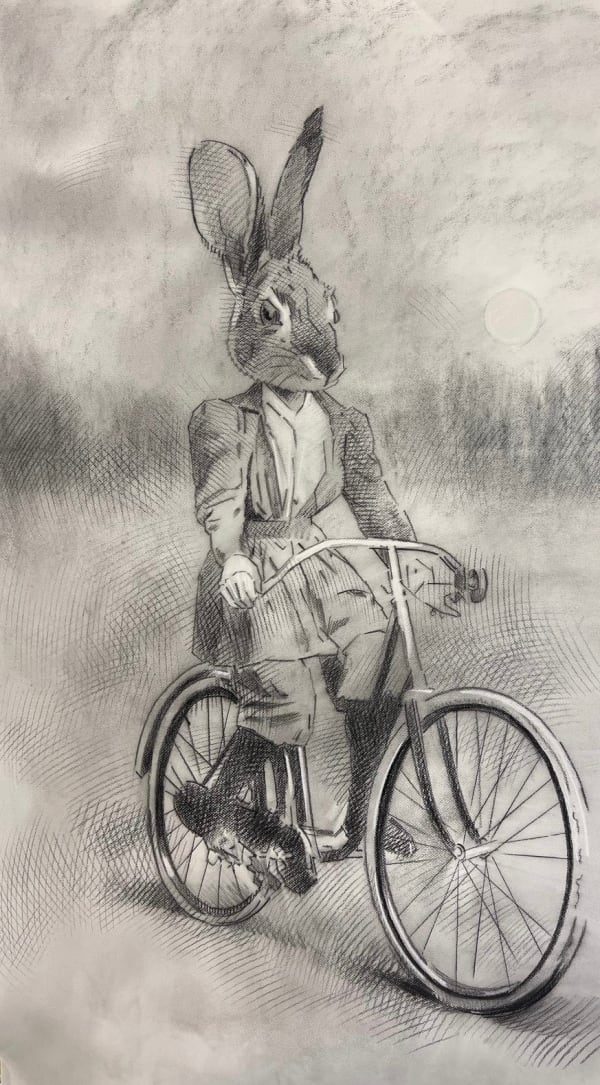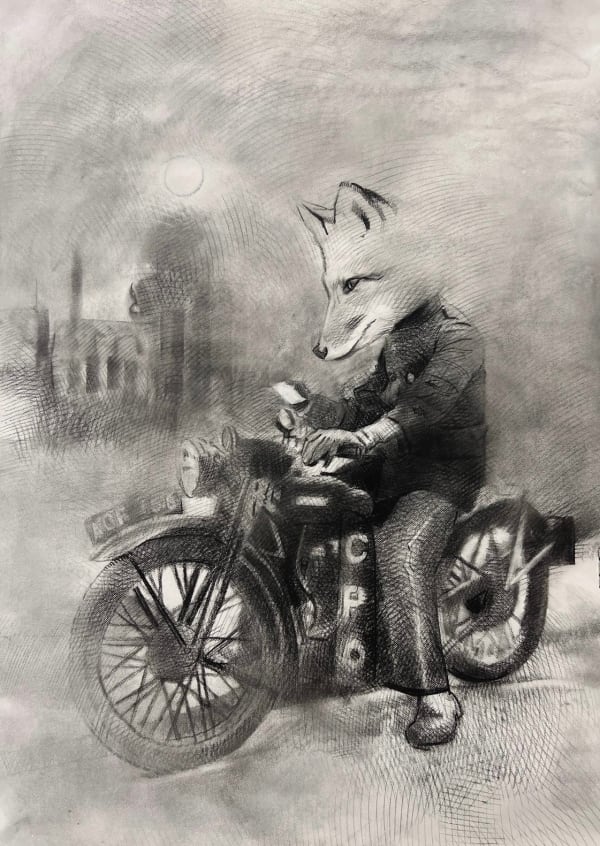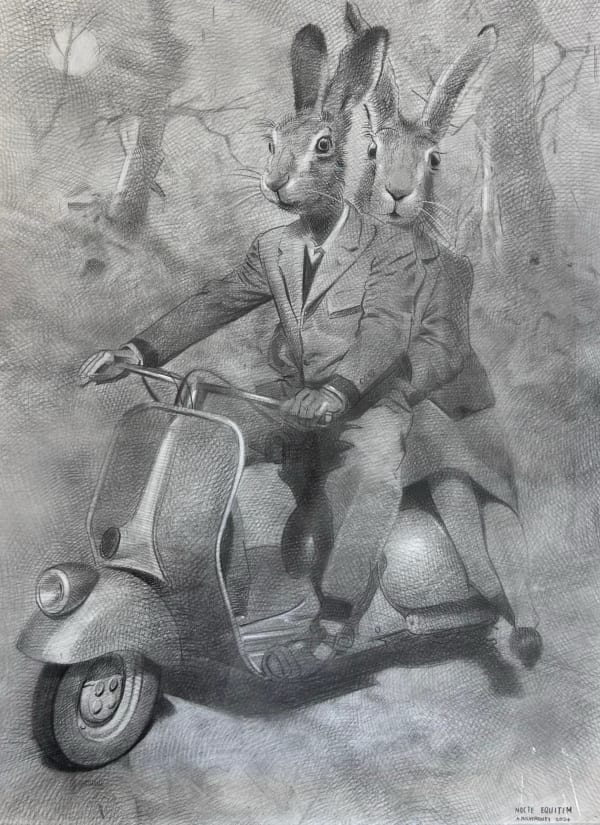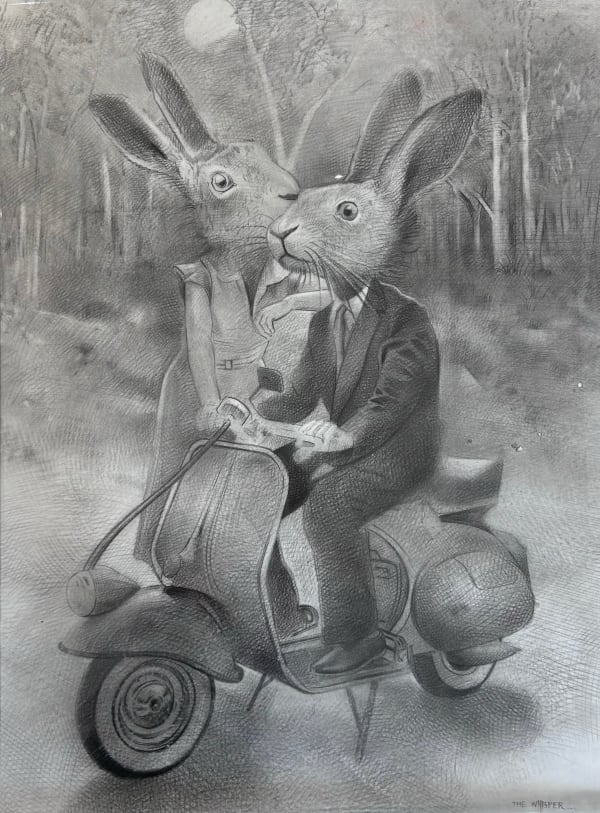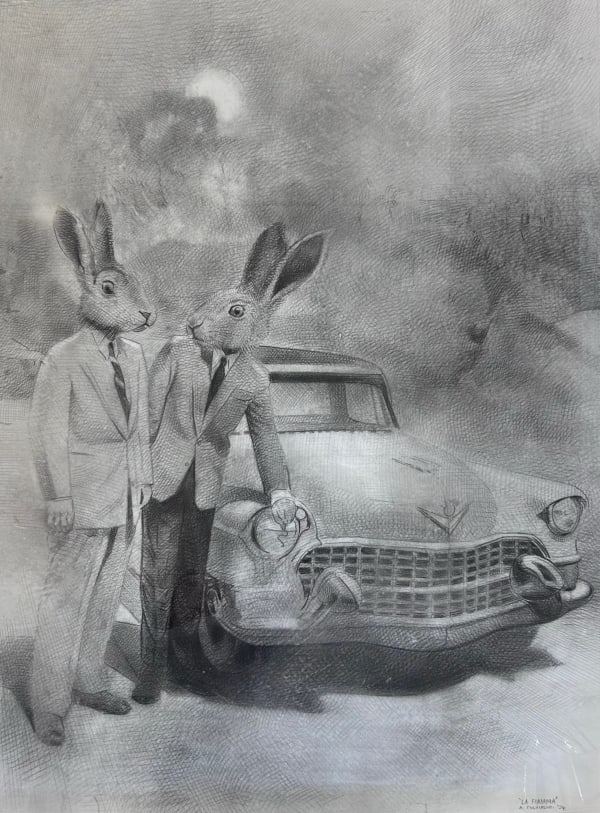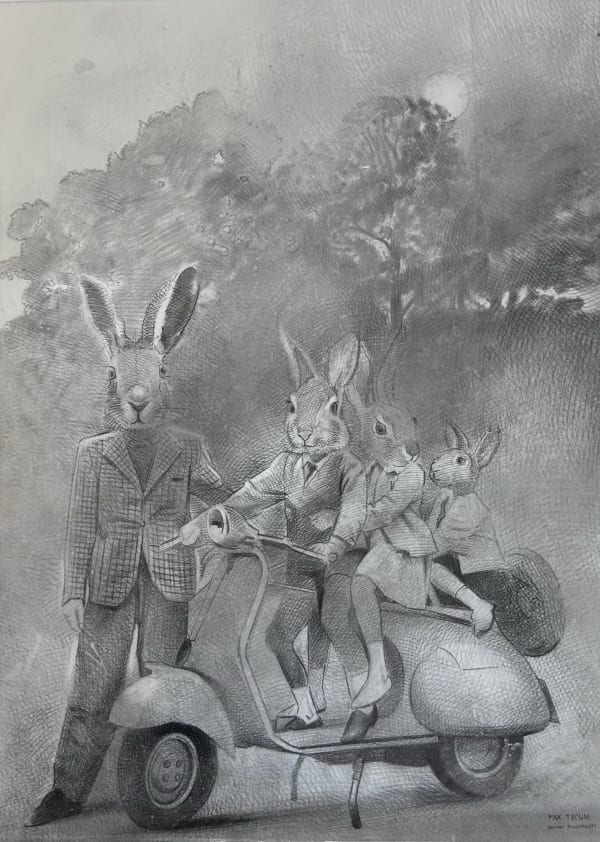"These drawings explore the memory of my grandfather’s internment in World War Two and its intergenerational transmission to the present day. I have used human and animal forms in the landscape to depict psychological undercurrents of the Italian internment experience.
The rabbit is an introduced species that the Australian government has periodically tried to control unsuccessfully which has become a metaphor for the Italian Australian experience of internment in my work. The placement of the rabbit’s head on the human body is telling, as it suggests a being led by animal desires. Indeed, the experience of detention occupies an existence between the animal and human: one governed by the absence of normal law in which one is not fully human. It is as if by drawing one can lay past experiences to rest, or at least lessen their destructive potential in the present."
Anton Pulvirenti is an Australian artist who works in a representational vein, exploring themes of memory and narrative across drawing, painting, and photography. His multidisciplinary approach also includes immersive 3D chalk art, which has earned him recognition for its bold, dynamic presence in public spaces.
Pulvirenti’s work is deeply informed by his Italian heritage. Each image he creates is narrative-driven, offering emotionally charged glimpses into personal and collective histories. Central to his practice is an ongoing exploration of the Italian Australian internment experience during World War II. Through a deeply personal lens, Pulvirenti draws a powerful parallel between the treatment of Italian internees and the perception of introduced species—such as foxes and rabbits—within the Australian landscape. This metaphor invites viewers to consider issues of belonging, alienation, and identity in historical and contemporary contexts.
Trained in life drawing under artist David Paulson for seven years and later at the Julian Ashton Art School in Sydney, Pulvirenti developed a strong foundation in observational techniques. Over time, his practice has expanded to include broader conceptual and historical dimensions. He also holds a PhD from the University of Sydney, reflecting his commitment to both creative and academic inquiry.



